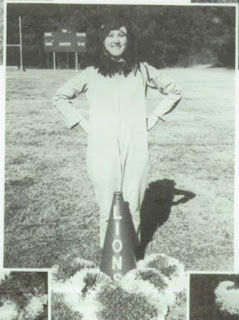Bacon began as a freelance photographer in Shreveport around 1940, where he maintained a temporary studio while waiting to move into the Wilder Brothers Service Center upon completion. The new studio was located at 920 Barksdale Boulevard. It was complete with a dark room for developing and printing, a studio for taking pictures with a raised platform or "shooting stage," and a reception room for the accommodation of patrons.
Their studio was the only one of its kind in Bossier City. In addition to taking pictures, they also offered services in tinting, oil coloring, and copying of old photographs and heirlooms. They constantly updated their equipment to provide their patrons the best. An ad seen in The Planters Press in 1948 announced, "Bacon's Studio is now equipped with an Eastman Century camera. Think with this he will be able to make the BEAUTIFUL much more so, and the UNATTRACTIVE lovely to 'look upon.' No kidding, if you wish to see 'real art' visit the Bacons."
Next, they installed a voice recording service using a portable RCA wire recorder, making Bacon's Studio the first in the area to offer records of both voice and music along with photographs of any event, such as weddings. Its first use was a recording of a wedding at Barksdale Air Force Base, where "the RCA device was installed at the scene of the ceremony, unostentatiously, and took perfect record of voices and music as desired." The recordings were on indestructible, aluminum records.
Mr. Bacon worked with the Bossier City Police and Sherrif's Departments to design and install equipment for taking mugshots, making the process of "mugging" persons under police investigation more efficient. He used a fixed focus camera that an amateur photographer could operate. It included three pairs of fixed lights for a total of 2,000 watts. When taking the mugshot, the background captured the subject's height. Police Chief J.A. Cathey stated that "It's the best in this part of the country."
As you can tell, the Bacon's were an essential part of the local community. Their work is seen in many older family photo albums throughout the parish. It also appears in many old newspapers, with photographs of brides and couples on their golden anniversaries and various events and places. Their work was not only famous locally; they also won awards and honorable mentions in annual competitions against hundreds of other professional photographers. Their motto – “We photograph anything, any time or any place.”
They attended the very first meeting of professional Louisiana photographers in New Orleans to organize the Louisiana Professional Photographers Association. They believed "an organized group would be beneficial to the photography profession," offering the profession advantages. At that time, professional photographers were interested in a bill before the state legislature that, if approved, would provide a state board of photographic examiners and regulate the practice of regular photography and provide licensing and registration of persons engaged in the practice of professional photography.
In 1958, the city purchased the building they occupied, and Bacon's Studio moved to 1700 Benton Road. By that time, their offerings included industrial movies and the new Hi-Fi (high fidelity) photographs. Later, they moved the studio to 1511 East Texas Street. Thus, Bacon's Studio was in operation in Bossier City for at least a quarter of a century.
By: Amy Robertson






















